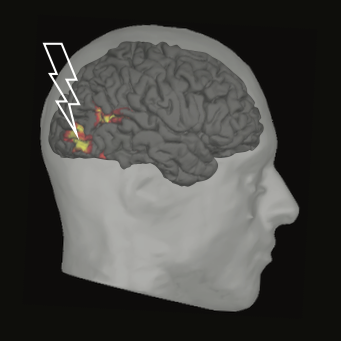The Occipital Face Area is Causally Involved in Facial Viewpoint Perception
Journal of Neuroscience (2015)
Tim Kietzmann, Sonia Poltoratski, Peter König, Randolph Blake, Frank Tong & Sam Ling

Humans reliably recognize faces across a range of viewpoints, but the neural substrates supporting this ability remain unclear. Recent work suggests that neural selectivity to mirror-symmetric viewpoints of faces, found across a large network of visual areas, may constitute a key computational step in achieving full viewpoint invariance. In this study, we used repetitive transcranial magnetic stimulation (rTMS) to test the hypothesis that the occipital face area (OFA), putatively a key node in the face network, plays a causal role in face viewpoint symmetry perception. Each participant underwent both offline rTMS to the right OFA and sham stimulation, preceding blocks of behavioral trials. After each stimulation period, the participant performed one of two behavioral tasks involving presentation of faces in the peripheral visual field: judging the viewpoint symmetry or judging the angular rotation. rTMS applied to the right OFA significantly impaired performance in both tasks when stimuli were presented in the contralateral, left visual field. Interestingly, however, rTMS had a differential effect on the two tasks performed ipsilaterally. While viewpoint symmetry judgments were significantly disrupted, we observed no impact on the angle judgment task. This interaction, caused by ipsilateral rTMS, provides support for models emphasizing the role of inter-hemispheric crosstalk in the formation of viewpoint-invariant face perception.

